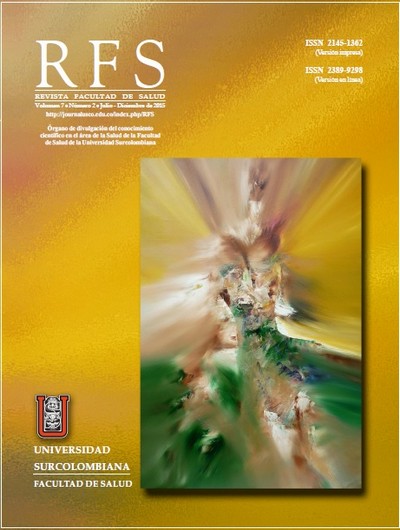Transient neurologic syndrome and combined spinal-epidural anaesthesia: Evidence of toxicity from local anaesthetic?
##plugins.themes.bootstrap3.article.main##
This article reports the case of a 39-year-old patient who underwent a local abdominal hysterectomy, Retropubic cystouretropexy as well as a posterior colporrhaphy under spinal anaesthetic, carried out with 0.5% hyperbaric bupivacaine and the use of peridural anaesthesia. When removing the peridural catheter neurological syndromes presented themselves in the lower limbs. Transient neurologic syndrome (TNS) was diagnosed and monitored until the symptoms disappeared. It is important to understand that despite the benign evolution of this syndrome these symptoms are of interest, given that their real clinical impact is yet to be defined as the first reports only date back to 1993 and its impact varies widely. This article revises the current literature about TNS and also describes the main characteristics of this condition.
Downloads
##plugins.themes.bootstrap3.article.details##
Köller C. The use of cocaine for producing anaesthesia of the eye [translated and reprinted]. Lancet 1884;II:990-2.
Bier A. Experiments regarding cocainization of the spinal cord [in German]. Zietschr Chir 1899;51:361-9.
Cathelin F, Sicard J. Discovery of epidural anesthesia [translated and published in classical file]. Surv Anesthesiol 1979;23:271-3.
Freedman J, Li D, Drasner K, et al. Transient neurologic symptoms after spinal anesthesia. Anesthesiology 1998;89:633-41.
Eberhart L, Morin A, Kranke P, et al. Transient neurologic symptoms after spinal anesthesia. A quantitative systematic overview (meta- analysis) of randomized controlled studies. Anaesthesist 2002;51:539-46.
Zaric D, Christiansen C, Pace N, et al. Transient neurologic symptoms after spinal anesthesia with lidocaine versus other local anesthetics: a systematic rewiew of randomized, controlled trials. Anesth Analg 2005;100:1811-16.
Schneider M, Ettlin T, Kaufmann M, Schumacher P, Urwyler A, Hampl K et al. Transient neurologic toxicity after hyperbaric subarachnoid anesthesia with 5% lidocaine. Anesth Analg 1993;76(5):1154-1157.
Pollock J. Neurotoxicity of intrathecal local anaesthestics and transient neurological symptoms. Best Practice and Reserch Clinical Anaesthesiology 2003;17:471-84.
Liu S, McDonald S. Current issues in spinal anesthesia. Anesthesiology 2001;94:888-906.
Pollock JE, Liu SS, Neal JM, Stephenson CA. Dilution of spinal lidocaine does not alter the incidence of transient neurologic symptoms. Anesthesiology 1999;90:445-50.
Hampl KF, Schneider MC, Ummenhofer W, Drewe J. Transient neurologic symptoms after spinal anesthesia. Anesth Analg 1995;81:1148-53.
Freedman JM, Li DK, Drasner K, Jaskela MC, Larsen B, Wi S. Transient neurologic symptoms after spinal anesthesia: an epidemiologic study of 1,863 patients. Anesthesiology 1998;89:633-41.
Lindh A, Andersson AS, Westman L. Is transient lumbar pain after spinal anaesthesia with lidocaine influenced by early mobilisation. Acta Anaesthesiol Scand 2001;45:290-3.
Beardsley D, Holman S, Gantt R, Robinson RA, Lindsey J, Bazaral M, Stewart SF, Stevens RA. Transient neurologic deficit after spinal anesthesia: local anesthetic maldistribution with pencil point needles? Anesth Analg 1995;81:314-20.
Rigler ML, Drasner K. Distribution of catheter injected local anesthetic in a model of the subarachnoid space. Anesthesiology 1991;75:684–92
Pollock J. Transient neurologic symptoms: etiology, risk, factors, and management. Reg Anesth Pain Med 2002;27:581-86.
Hampl KF, Heinzmann-Wiedmer S, Luginbuehol I, Harms C, Seeberger M, Schneider M, Drasner K. Transient neurologic symptoms after spinal anesthe- sia. Anesthesiology 1998;88:629-633.
Pollock JE, Neal JM, Stephenson CA, Wiley C. Prospective study of the incidence of transient radicular irritation in patients undergoing spinal anesthesia. Anesthesiology 1996;84:1361-1367.
Zaric D, Pace NL. Transient neurologic symptoms (TNS) following spinal anaesthesia with lidocaine versus other local anaesthetics. Cochrane Database of Systematic Reviews 2009, Issue 2. Art. No.: CD003006. DOI:10.1002/14651858.CD003006.pub3.
Yamashita A, Matsumoto M, Matsumoto S, et al. A comparison of the neurotoxic effects on the spinal cord of tetracaine, lidocaine, bupivacaine, and ropivacaine administered intrathecally in rabbits. Anesth Analg 2003;97:512-518.
Kasaba T, Onizuka S, Takasaki M. Procaine and mepivacaine have less toxicity in vitro than other clinically used local anesthetics. Anesth Analg 2003;97:85-90.










